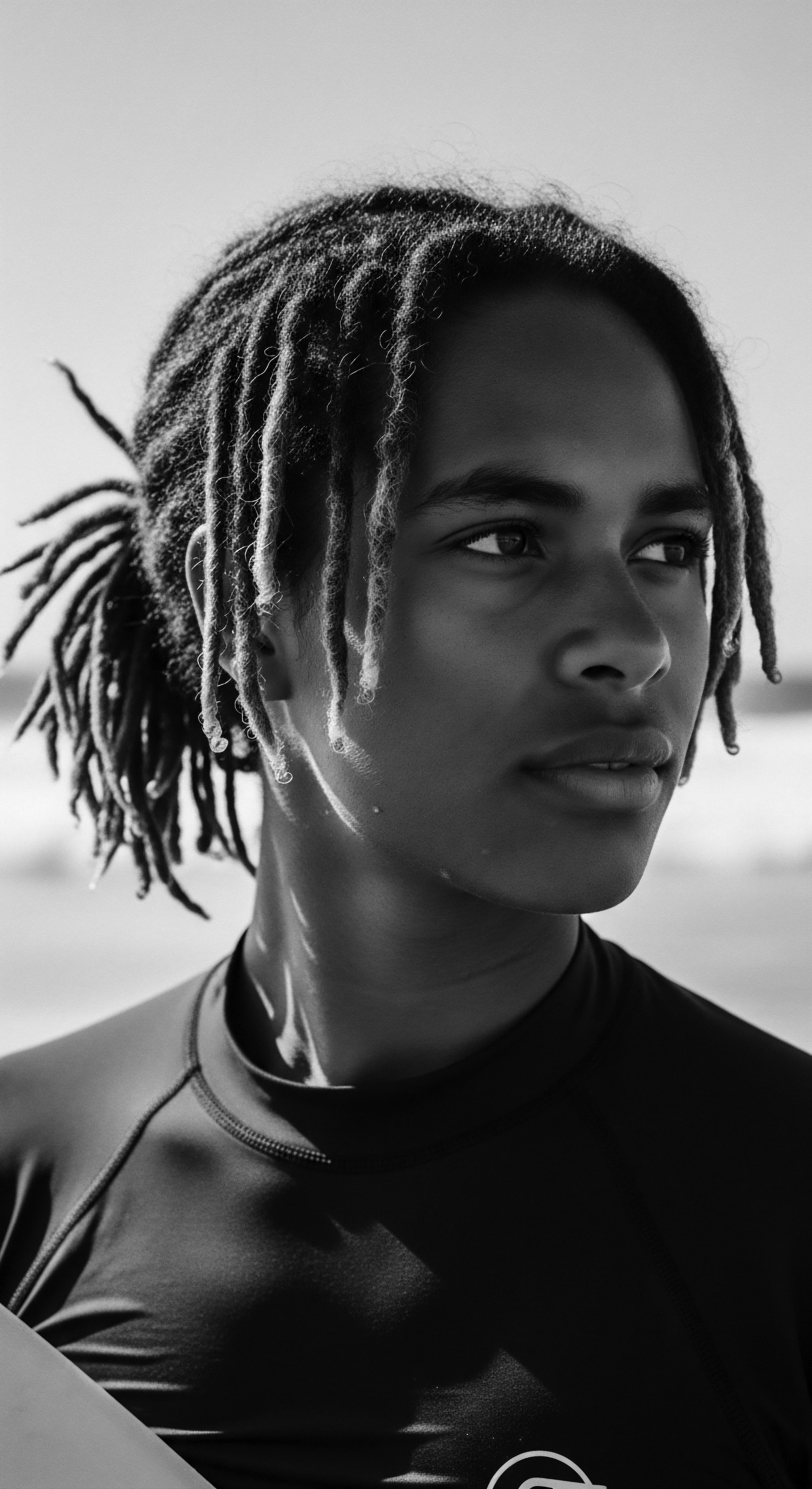
Fundamentals
The study of Ancient Head Coverings, at its core, reveals a rich tapestry woven from the threads of human ingenuity, cultural expression, and the enduring quest for protection. To a newcomer, the concept might seem straightforward ❉ fabric on the head. Yet, this simple designation belies a world of profound meaning, extending far beyond mere utility. For our exploration, we turn our gaze specifically to the ways these coverings intertwined with the very being of textured hair, particularly within ancestral Black and mixed-race communities.
Across continents and millennia, ancient peoples recognized the inherent vulnerability and spiritual potency of their hair. They understood it as a conduit for energy, a repository of strength, and a visible declaration of identity. Therefore, safeguarding this vital aspect of self became a priority, leading to the development of diverse coverings. These initial designs, though often elemental, laid the groundwork for sophisticated sartorial practices that would persist for generations.
Their primary aim was often protection from the harsh elements, shielding delicate strands from sun, dust, and debris. This practical function, however, quickly evolved into something far grander, reflecting societal norms and individual stories.
Ancient Head Coverings, in their simplest form, provided essential protection for textured hair while laying the foundation for complex cultural expressions of identity and spiritual connection.
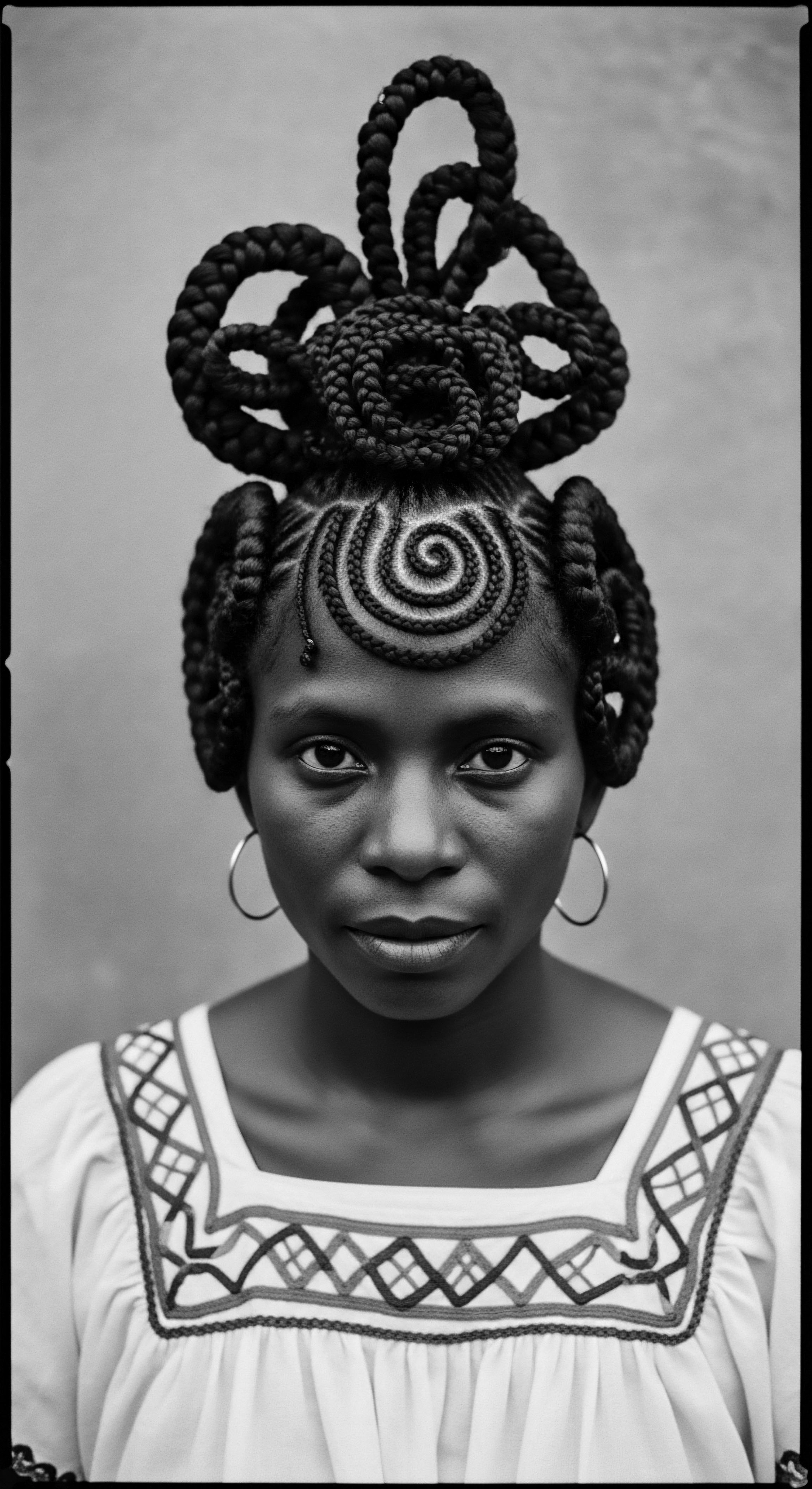
Early Utility and Protective Practices
From the earliest communal gatherings, the sun’s relentless gaze and the desert’s abrasive winds posed constant challenges to hair health. For individuals with coily, kinky, or wavy hair patterns, exposure meant potential dryness, breakage, and tangling. Thus, the primal motivation behind ancient head coverings emerged ❉ safeguarding the integrity of the hair shaft and scalp.
Early materials, sourced directly from the earth, included woven grasses, animal hides, and later, rudimentary textiles. These coverings acted as a physical barrier, preserving moisture and offering respite from environmental aggressors.
- Fibers ❉ Early materials often comprised natural fibers like flax, cotton, or wool, providing varying degrees of insulation and breathability.
- Dyes ❉ Pigments derived from plants and minerals lent color, not merely for adornment but sometimes for symbolic protection or tribal distinction.
- Form ❉ Simple wraps or caps, often held in place with rudimentary pins or knots, represented the foundational shapes.
The knowledge of how best to utilize these materials for hair protection was passed down through oral traditions, becoming an intrinsic part of ancestral hair care rituals. These practices underscore an ancient understanding of hair health that predates modern scientific classifications. The act of covering hair was not an isolated gesture; it was part of a holistic system of care, encompassing natural oils, herbal infusions, and communal grooming practices that prioritized the well-being of textured strands.
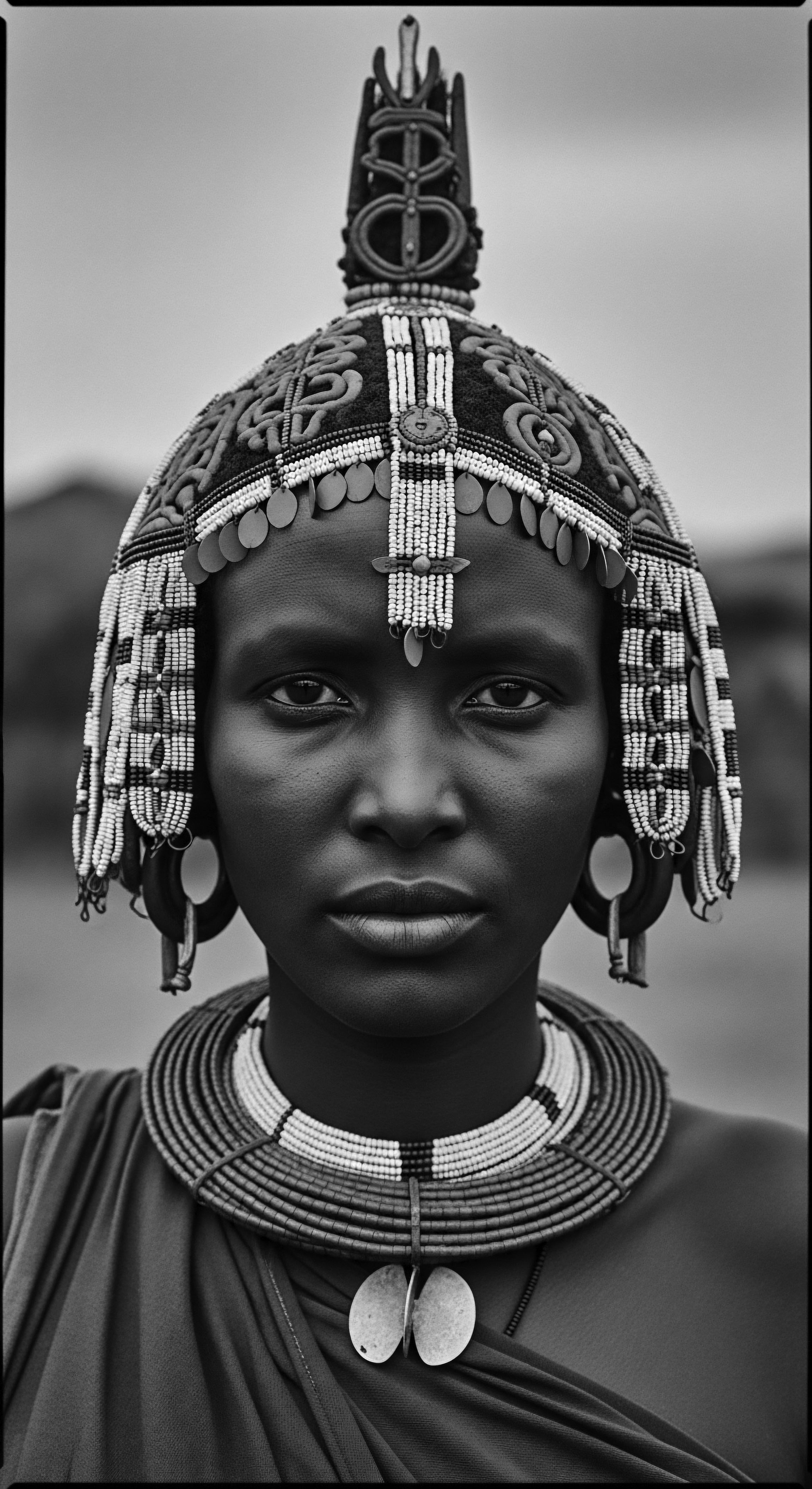
Simple Symbolism and Social Cues
Beyond their protective qualities, even the earliest forms of head coverings began to acquire symbolic weight. A covering could denote tribal affiliation, status within a community, or readiness for a specific ritual. The choice of material, the particular hue, or the manner of tying each carried unspoken messages, understood by those within the cultural fabric. These visual cues became a non-verbal language, communicating nuances of belonging and identity.
In many ancestral societies, the act of covering one’s head also related to concepts of modesty, respect, or spiritual reverence. For some, uncovered hair might be considered vulnerable to malevolent spirits, or it might be reserved for intimate family settings. The transition from childhood to adulthood, or from singlehood to marriage, often manifested through changes in head covering styles. This rudimentary symbolism established a paradigm where hair, and its covering, served as a profound outward expression of an individual’s journey and their connection to the collective.
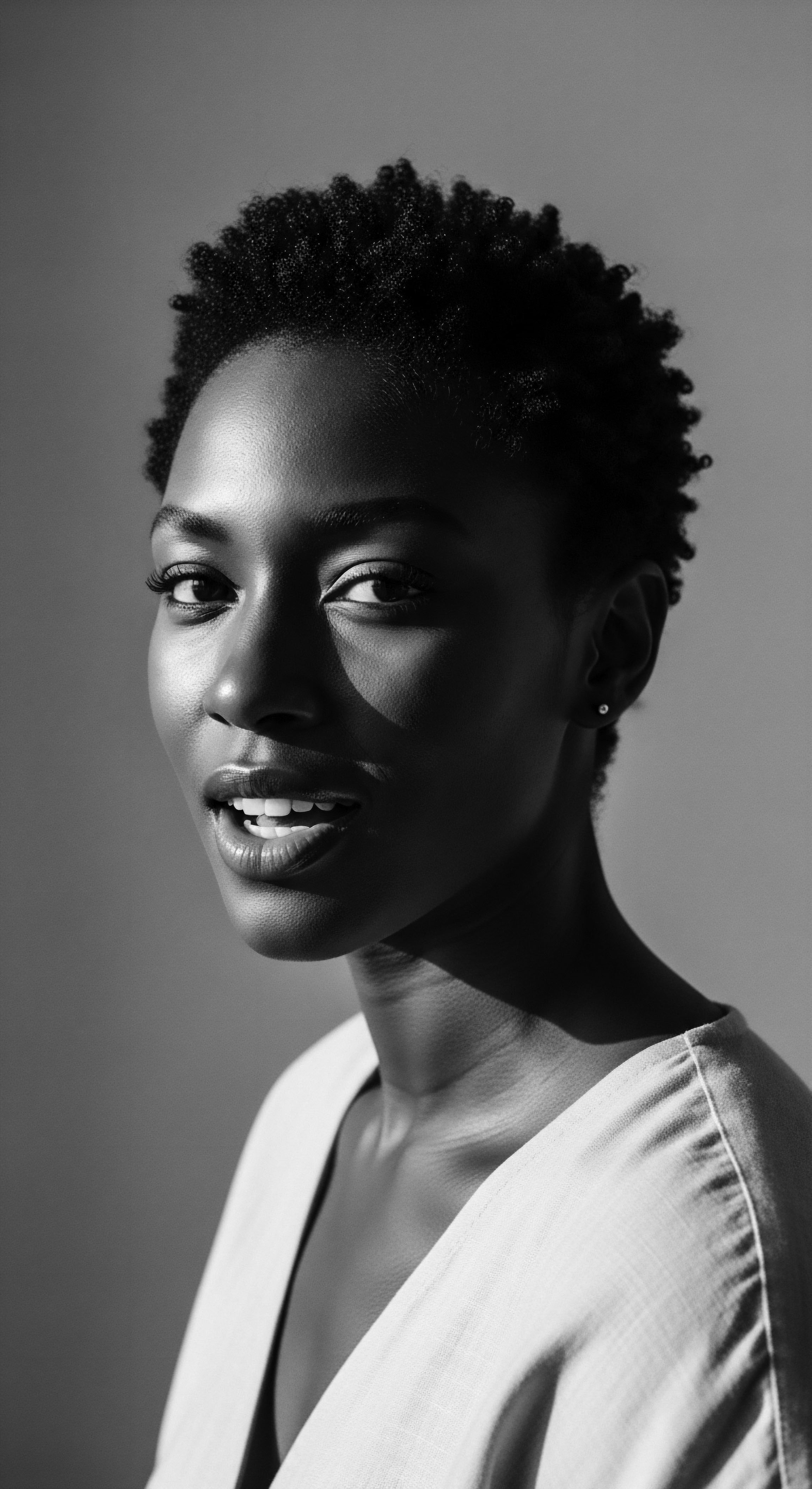
Intermediate
Moving beyond the foundational understanding, the intermediate examination of Ancient Head Coverings delves deeper into their nuanced meanings and applications across diverse cultural landscapes. This expanded perspective illuminates how these coverings evolved from simple shields into complex vehicles for cultural expression, social stratification, and the preservation of distinct hair traditions, particularly significant for those with textured hair. The practices associated with head coverings were intrinsically linked to the very identity of the wearer, a living testament to ancestral wisdom.
The sheer variety of materials, styles, and the ceremonial significance attached to head coverings across ancient civilizations demonstrates their critical role in human societies. For communities where textured hair was the norm, head coverings offered solutions to unique challenges presented by hair type—managing volume, maintaining intricate styles, and protecting against environmental wear. These solutions were not merely practical; they were imbued with layers of cultural meaning that resonate even today, offering insights into historical hair care and aesthetic preferences.

Cultural Fabric ❉ Identity and Status
Ancient head coverings functioned as powerful identifiers, allowing immediate recognition of a person’s group affiliation, social standing, or even their life stage. In many African societies, for example, the intricate wrapping of the head, known by various names such as Gele in Yoruba culture or Dhuku in Shona traditions, communicated a wealth of information without a single word. The height, the fabric, the specific knot—each element held deliberate meaning. A woman’s marital status, her age, her wealth, and her spiritual devotion could all be conveyed through the artistry of her headwrap.
The selection of textiles also carried significant weight. Silks, fine cottons, and specially dyed cloths were often reserved for nobility or those of high religious standing, while more utilitarian fabrics suited daily wear. This established a visual hierarchy, with head coverings serving as visible markers of societal roles. The communal effort involved in preparing and adorning these coverings often forged strong bonds, solidifying community identity through shared aesthetic practices.
Beyond their protective utility, ancient head coverings operated as a sophisticated visual language, articulating social identity, status, and community affiliation through their materials, styles, and ceremonial applications.

Protective Traditions and Hair Management
The practical function of head coverings in preserving textured hair cannot be overstated. In climates ranging from arid deserts to humid tropics, head coverings protected hair from sun-induced dryness, dust accumulation, and excessive moisture, which can lead to fungal growth or hair degradation. Many traditional styles for textured hair, such as braids, twists, and locs, require considerable time and effort to create and maintain. Head coverings provided an essential means of preserving these protective styles for longer durations, reducing the need for constant manipulation and thereby minimizing breakage.
Consider the use of coverings in ancient Egyptian society. While depictions show various hairstyles, the practicalities of a desert climate likely necessitated hair protection. Later, across various sub-Saharan African civilizations, the knowledge of how to wrap and cover textured hair became a specialized skill, passed down through generations. These coverings helped to ❉
- Moisture Retention ❉ Trapping natural oils and applied emollients close to the scalp and hair, preventing evaporation in dry environments.
- Physical Shielding ❉ Protecting delicate strands from environmental abrasion, dirt, and damaging UV rays.
- Style Preservation ❉ Maintaining the integrity of elaborate braided or twisted styles for extended periods, contributing to hair health by reducing manipulation.
The understanding that these coverings were not just about appearance but about the very health and longevity of hair is a testament to ancestral hair science. The purposeful selection of fabrics like cotton or linen, known for their breathability and absorbency, demonstrates an inherent knowledge of material science applied to hair care.
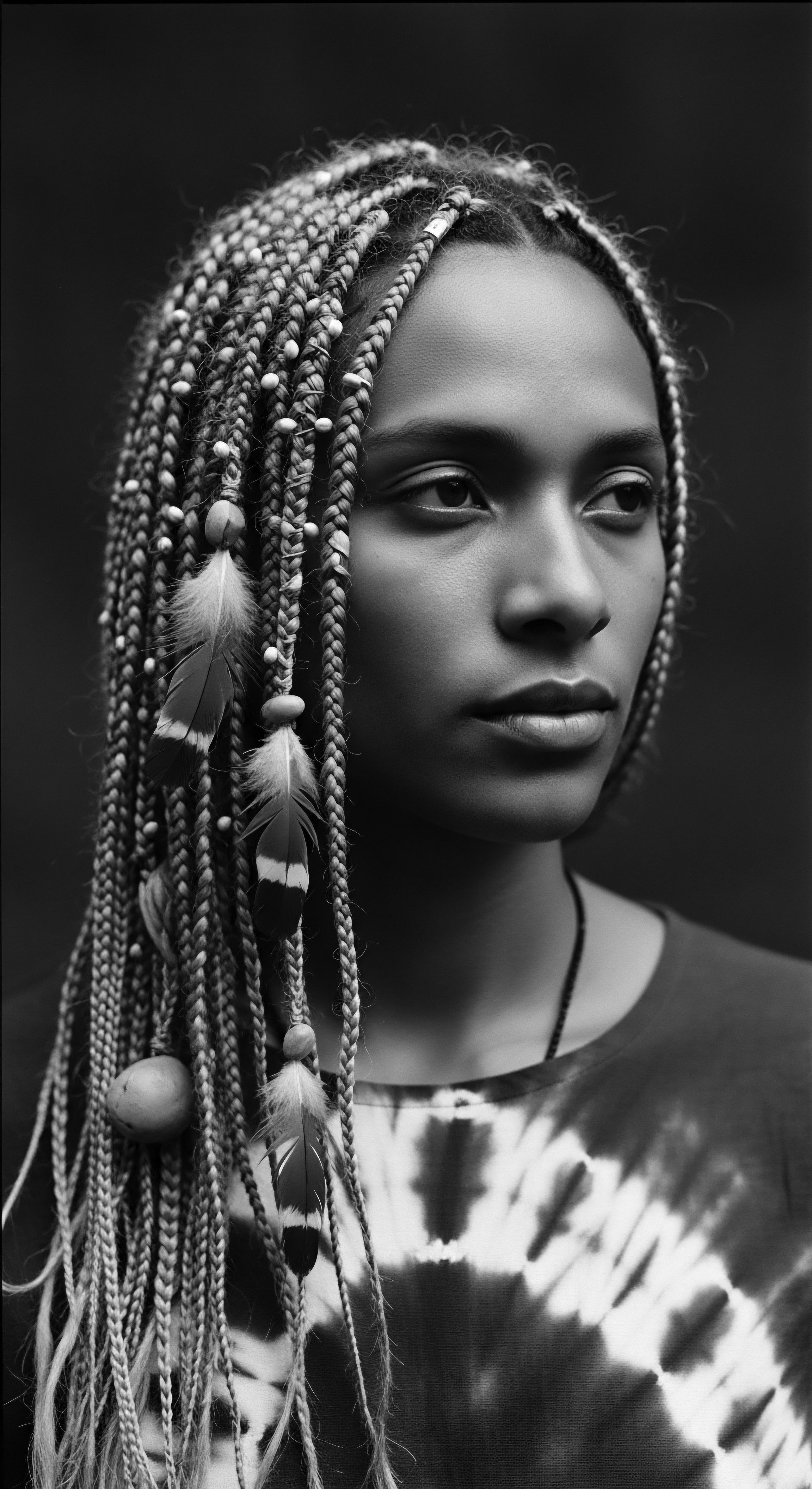
Beyond Adornment ❉ Spiritual and Ritualistic Meanings
The significance of Ancient Head Coverings frequently transcended the purely aesthetic or social, venturing deeply into the spiritual and ritualistic realms. In numerous cultures, the head was considered a sacred part of the body, a spiritual crown, and a point of connection to the divine or ancestral spirits. Covering the head, particularly for women, could symbolize piety, humility, or a heightened state of spiritual readiness during ceremonies.
Priestesses, shamans, and spiritual leaders often wore distinct head coverings during rituals, indicating their direct link to higher powers or their role as mediators between the physical and spiritual worlds. These coverings were not mere accessories; they were integral components of sacred regalia, imbued with protective qualities against negative energies or designed to facilitate spiritual communication. The reverence shown for head coverings within spiritual contexts underscores their deep meaning and the interwoven nature of beauty, belief, and daily practice in ancestral life. The materials, colors, and patterns chosen for these sacred coverings were often specific, holding symbolic resonance within the spiritual cosmology of the community.
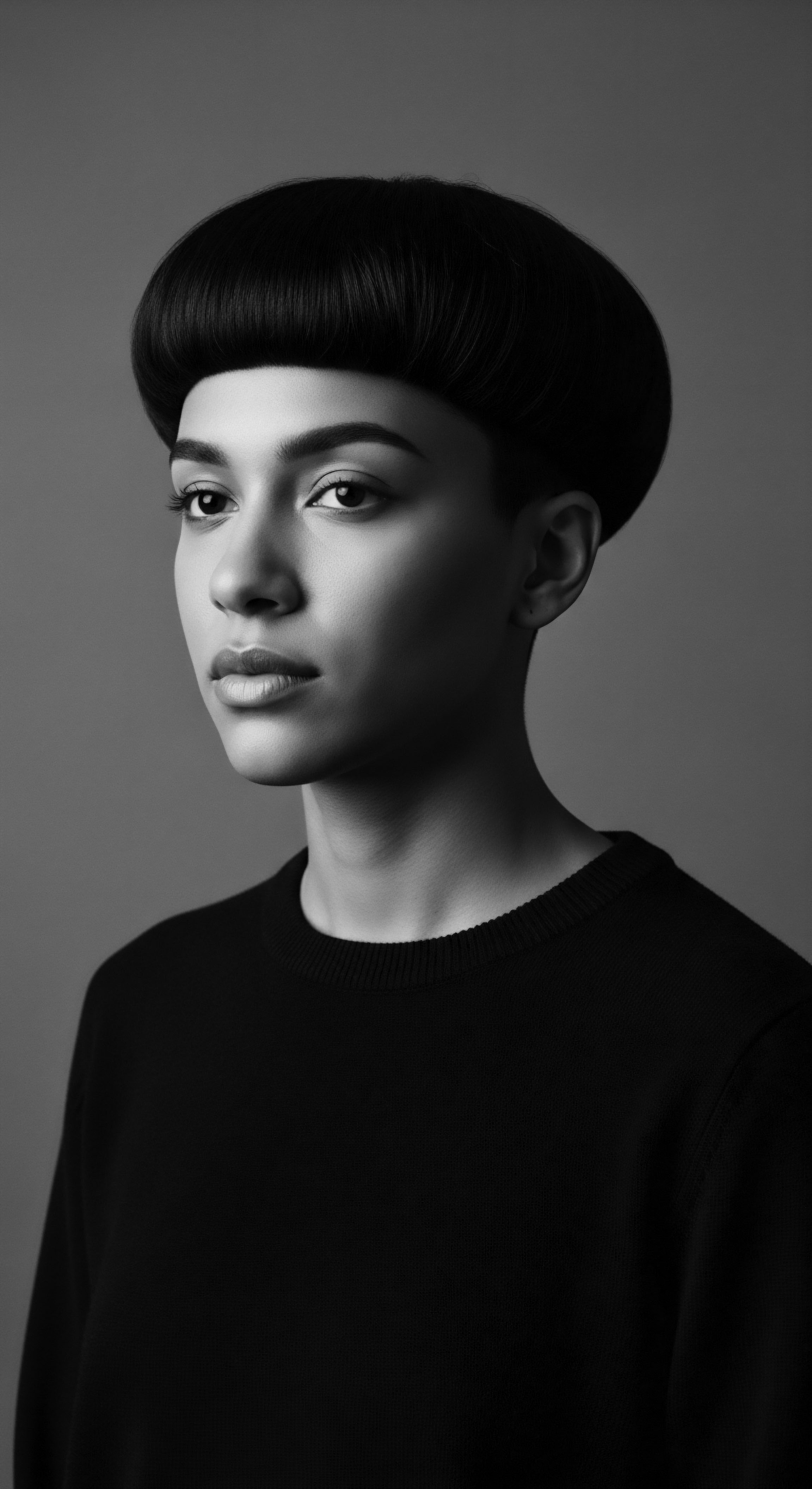
Academic
The academic definition of Ancient Head Coverings, particularly when examined through the lens of textured hair heritage, delineates them as complex cultural artifacts whose meaning extends far beyond simple sartorial choice or pragmatic utility. They stand as profound semiotic systems, historical documents, and biological protectors, collectively shaping and preserving the material and symbolic world of hair, especially within Black and mixed-race ancestries. This definition demands an interdisciplinary approach, drawing from archaeology, anthropology, ethno-botany, and the emerging field of hair sociology.
The coverings themselves become loci of inquiry, embodying cultural capital, resistance, and continuity across generations. Their significance stems from an inherent recognition of the hair’s vulnerability and its immense power as an identity marker.
Through meticulous archaeological excavations and the careful study of oral histories, we discern that these coverings were not monolithic in purpose. They were adaptive technologies, spiritual conduits, and declarations of political and social standing. The scholarly investigation of their forms, materials, and ceremonial applications offers a unique window into the socio-cultural dynamics of ancient societies, revealing intricate relationships between human communities and their environment, their spiritual beliefs, and their embodied identities. The academic scrutiny reveals a continuity of practice, echoing ancient concerns about hair health and identity in modern expressions of textured hair care and styling.
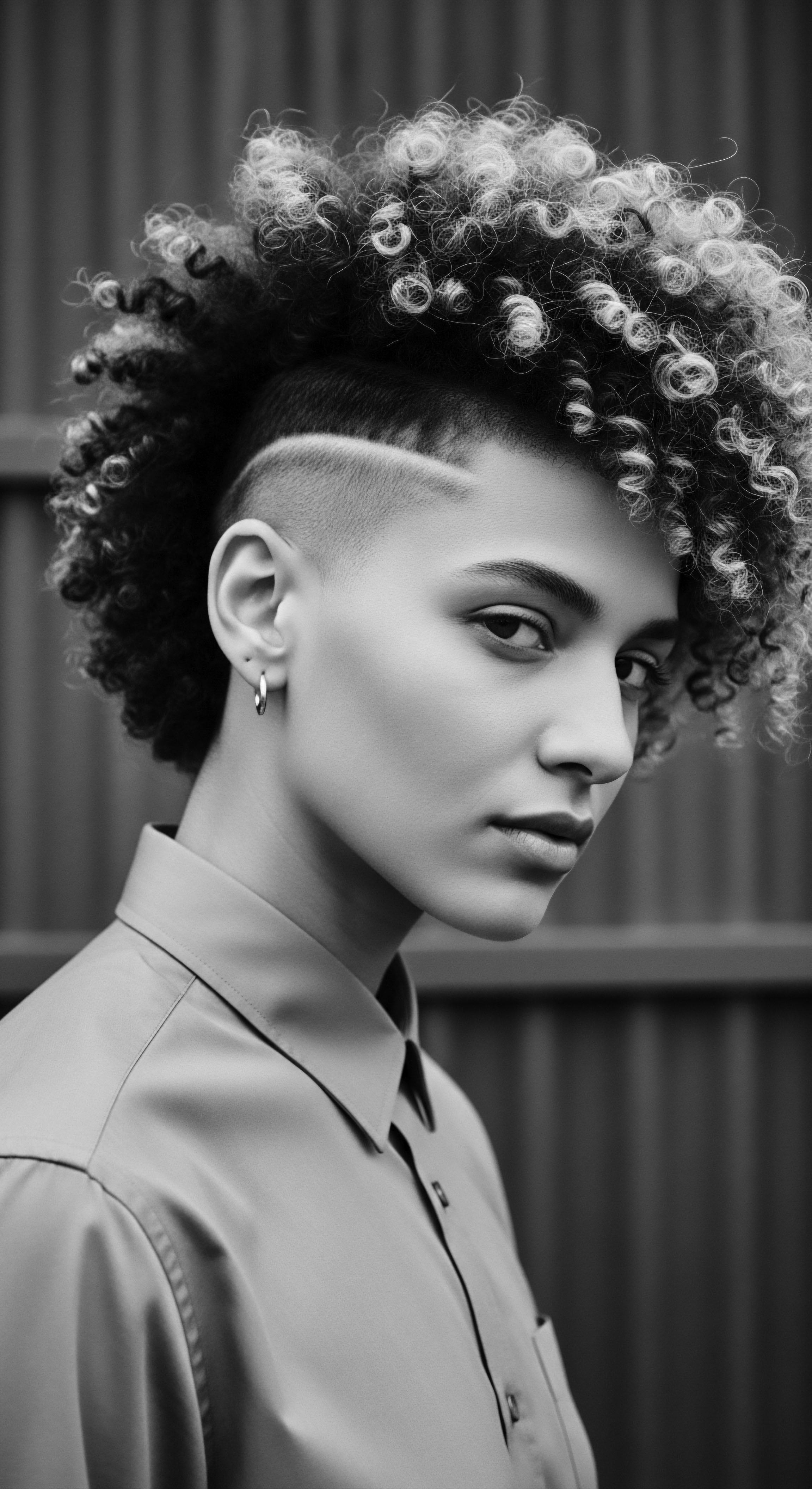
Archaeological Threads ❉ Unearthing Hair’s Covered Past
Archaeological findings offer tangible evidence of ancient head covering practices. For instance, textile fragments discovered in ancient Egyptian tombs depict materials consistent with headwraps, while artwork frequently showcases depictions of covered or intricately styled hair. The preservation of hair itself within certain archaeological contexts, such as mummified remains, allows for direct observation of its texture and the methods likely employed to protect it. For textured hair, which is inherently more prone to moisture loss and tangling due to its elliptical cross-section and curl pattern, ancient covering methods were often a necessity for long-term health and maintenance.
Scholarly analysis of tomb murals from the New Kingdom period in Egypt, for example, reveals not just elaborate coiffures but also various forms of head adornment and partial coverings. While the exact function of every piece is debated, the presence of such coverings strongly implies a dual role ❉ both as protective measures against the desert environment and as expressions of status or religious affiliation (Meskell, 2004). The meticulous wrapping of deceased individuals, often including their hair, further underscores a belief in the sanctity of the head and its protective encasement, echoing ancestral practices of safeguarding the self.
| Material Category (Historical) Natural Plant Fibers |
| Common Forms/Examples Woven flax, cotton, various grasses |
| Hair Health Relevance (Textured Hair) Breathability, moisture absorption, often less abrasive than coarser alternatives, aiding in preventing frizz and breakage. |
| Material Category (Historical) Animal Fibers |
| Common Forms/Examples Wool, rougher woven animal hair |
| Hair Health Relevance (Textured Hair) Insulation, warmth, but potentially more friction for delicate textures if unlined. Provided protection in colder climates. |
| Material Category (Historical) Vegetable Dyes/Resins |
| Common Forms/Examples Indigo, madder root, plant-based fixatives |
| Hair Health Relevance (Textured Hair) Beyond color, some had antimicrobial properties or helped strengthen fibers, indirectly benefiting scalp health. |
| Material Category (Historical) These ancient material choices reflect an intuitive understanding of textiles and their impact on hair integrity, passed down through generations. |

Societal Weavings ❉ Status, Resistance, and Cultural Transmission
The academic discourse on Ancient Head Coverings emphasizes their role as instruments of social communication and, critically, as symbols of resistance and cultural continuity within marginalized communities. For populations whose hair types were often deemed “unruly” or “unacceptable” by dominant, Eurocentric beauty standards, head coverings provided a crucial means of asserting autonomy and preserving cultural identity. The headwrap, in particular, became a silent yet potent emblem.
A powerful case study revealing this intersection of head coverings, textured hair heritage, and resistance comes from the antebellum South of the United States. During slavery, enslaved African women often wore simple cloth wraps, born out of necessity for hygiene and sun protection in the fields. Yet, as scholars like T. Denean Sharpley-Whiting (2011) argue, these seemingly simple coverings quickly transcended their practical origins.
They became covert canvases for self-expression, identity, and silent rebellion. The ways a wrap was tied, the colors chosen (often through ingenious repurposing of discarded fabrics), or the addition of small adornments, could communicate defiance, hope, or solidarity within the enslaved community. This transformation from a symbol of servitude to an emblem of quiet dignity and resilience is a compelling academic point. Sharpley-Whiting’s analysis highlights how the headwrap, despite its imposed origins, became a vital means of cultural transmission and a locus of aesthetic and spiritual resistance. The women, denied direct means of expression, found a voice in the folds of their head coverings, preserving ancestral aesthetics and communicating a defiant selfhood.
Ancient head coverings served as vital cultural instruments, symbolizing status, acting as silent acts of resistance, and facilitating the intergenerational transmission of heritage, particularly within diasporic communities facing oppression.
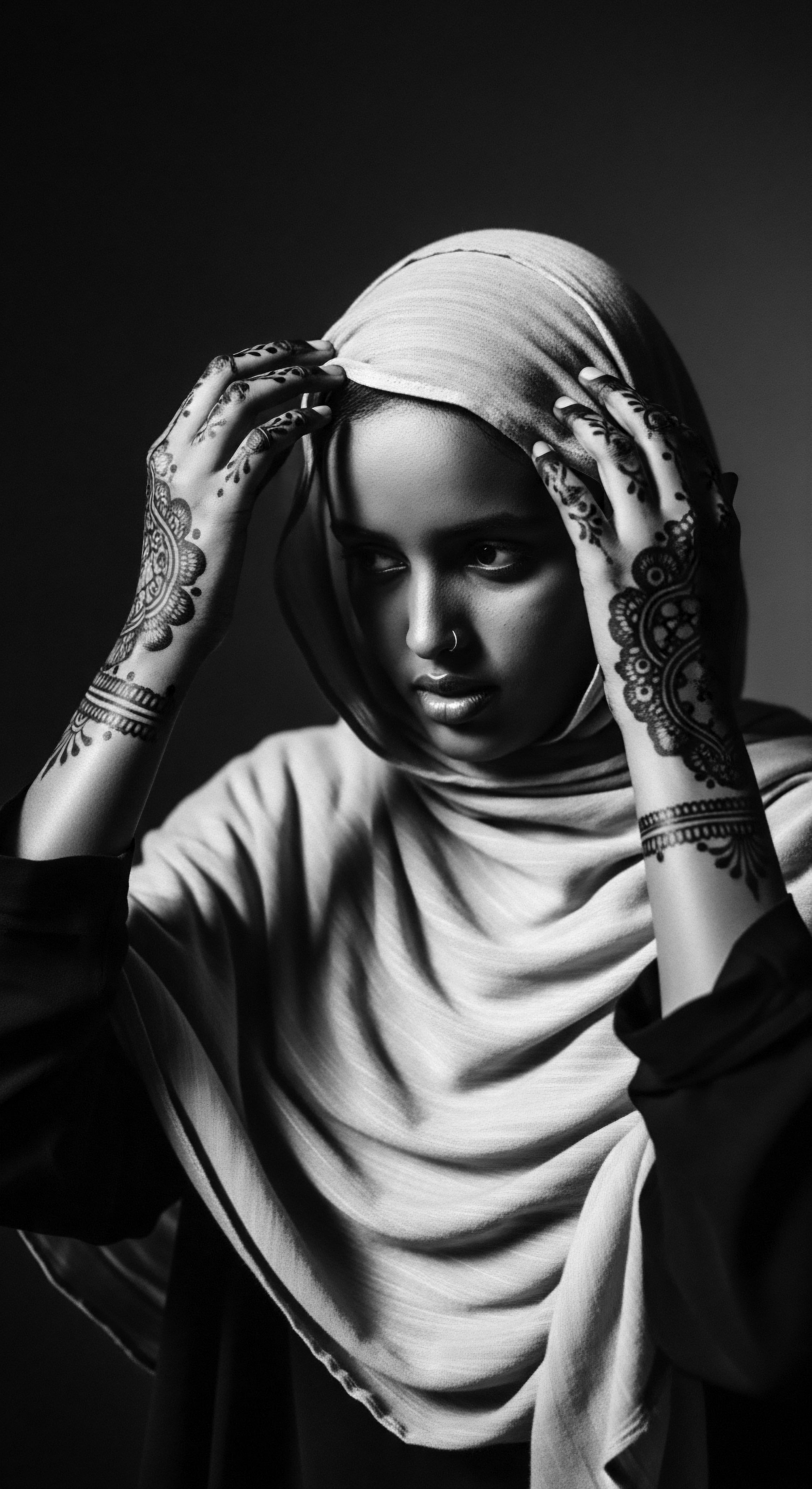
Hair as Sacred Canvas ❉ Spirit and Ontology
From an ontological perspective, many ancient cultures regarded hair, and by extension its covering, as a profound extension of the self, intimately connected to one’s spiritual essence and life force. This understanding is particularly visible in various African spiritual systems where the head (ori in Yoruba philosophy, for example) is considered the seat of one’s destiny, character, and spiritual consciousness. Consequently, the act of covering the head became a sacred ritual, designed to protect this spiritual conduit, enhance spiritual receptivity, or signify a state of ritual purity.
The elaborate head coverings of West African royalty, or the symbolically charged veils used in ancient Nubian ceremonies, were not arbitrary decorations. They were carefully crafted artifacts, imbued with specific energies and meanings, often worn during rites of passage, enthronements, or spiritual consultations. The materials used, the patterns woven into the fabric, and the specific deities or ancestors invoked during the dressing process all contributed to the covering’s spiritual potency.
This deep spiritual connection underscores a holistic worldview where the physical manifestation of hair and its covering was inseparable from one’s inner spiritual life. The continued practice of covering hair in certain African and Afro-diasporic spiritual traditions today directly echoes these ancient ontological understandings, a direct lineage of reverence for hair’s sacred qualities.

A Legacy of Resilience ❉ Contemporary Reverberations
The academic study of Ancient Head Coverings extends into their contemporary echoes, revealing how these ancestral practices persist and adapt in modern contexts, particularly for individuals navigating Black and mixed-race hair experiences. The headwrap, the turban, and various other forms of head covering remain powerful symbols of heritage, beauty, and identity for many, serving as a direct link to ancient traditions. They continue to function as protective measures for delicate textured hair, shielding it from pollutants and maintaining moisture, much as their ancient predecessors did.
Furthermore, in an era where Eurocentric beauty standards often dominate media, the resurgence of head coverings among Black women globally represents an act of reclamation and self-affirmation. It is a conscious choice to honor ancestral aesthetics and to redefine beauty on one’s own terms, rather than conforming to external pressures. This contemporary practice is not merely fashion; it is a continuation of a profound historical dialogue, a visible declaration of pride in one’s heritage, and a testament to the enduring wisdom embedded in ancient traditions of hair care and adornment. The study of ancient coverings thus provides a vital framework for understanding the deep historical roots of contemporary hair politics and the ongoing celebration of textured hair.

Reflection on the Heritage of Ancient Head Coverings
The journey through the world of Ancient Head Coverings has been a profound exploration, revealing them as far more than simple garments. They stand as silent storytellers, whispering tales of ancestral wisdom, enduring resilience, and the inherent sacredness of textured hair. From the elemental biology of a single strand, shielded from the elements by the earliest wraps, to the intricate cultural narratives woven into every knot and fold, these coverings embody a living archive of heritage. They are the tender thread connecting past practices to the vibrant expressions of today, a testament to communities who understood hair not just as fiber, but as a living part of the self, deserving of profound care and honor.
We see how these coverings safeguarded the biological integrity of textured hair, preserving its moisture and structure through centuries of diverse climates and daily life. Simultaneously, they became canvases for identity, silent declarations of status, spiritual belief, and acts of quiet defiance. This duality—the practical and the symbolic—speaks to a holistic approach to being, where every aspect of life, even a piece of cloth, carried layers of significance. The echoes from the source resonate powerfully, reminding us that the wisdom of ancient practices remains relevant, offering guidance for nurturing textured hair and honoring its unique lineage.
In the unfolding of this story, the Ancient Head Coverings emerge as a beacon, guiding us to appreciate the unbroken lineage of care, creativity, and self-possession that defines the heritage of Black and mixed-race hair. They invite us to look deeper, to see the artistry in their construction, the resilience in their symbolism, and the deep respect for hair that animates their very existence. The unbound helix of textured hair, so often misunderstood or marginalized, finds its voice and its historical grounding in these ancestral coverings, affirming its beauty and its timeless connection to a rich cultural past.

References
- Meskell, Lynn. Object Worlds in Ancient Egypt ❉ Material Biographies Past and Present. Berg, 2004.
- Sharpley-Whiting, T. Denean. Pimps Up, Ho’s Down ❉ Hip Hop’s Machiavellian Politics of Race, Gender, and Sex. New York University Press, 2011.
- Thompson, Robert Farris. Flash of the Spirit ❉ African and Afro-American Art and Philosophy. Vintage Books, 1984.
- Walker, Sheila S. African Roots/American Cultures ❉ Africa in the Creation of the Americas. Rowman & Littlefield Publishers, 2001.
- Ogude, Steve. African Hair ❉ Culture, Identity, and Practices. Palgrave Macmillan, 2020.
- Gates Jr. Henry Louis. The Signifying Monkey ❉ A Theory of Afro-American Literary Criticism. Oxford University Press, 1988.
- Appiah, Kwame Anthony. In My Father’s House ❉ Africa in the Philosophy of Culture. Oxford University Press, 1992.
